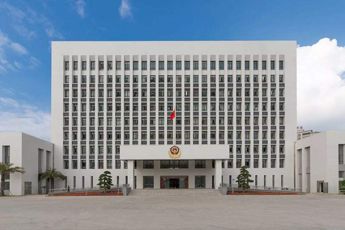UAE Military Drone Technology Regulations
The United Arab Emirates (UAE) has emerged as a key player in the Middle East, not only for its economic prowess but also for its advancements in military technology, particularly in the realm of unmanned aerial vehicles (UAVs), or drones. As drone technology continues to evolve, the UAE has implemented a robust regulatory framework to govern its military applications, balancing innovation with security concerns. This topic is of significant interest to intelligence communities in the U.S. and the Middle East, where the proliferation of drone technology shapes regional power dynamics and counterterrorism efforts. In this context, companies like Knowlesys.com, which provides cutting-edge Open-Source Intelligence (OSINT) monitoring systems, play a vital role in helping intelligence professionals track and analyze these developments.
The Rise of Military Drone Technology in the UAE
The UAE has heavily invested in military drone technology as part of its broader defense strategy. With its strategic location near conflict zones like Yemen and its alliances with Western powers, including the United States, the UAE has prioritized the development and acquisition of advanced UAVs. Local companies, such as ADASI (a subsidiary of the state-owned EDGE Group), have produced drones like the "Yabhon" series, designed for reconnaissance and combat missions. Additionally, the UAE has procured foreign systems, including Chinese Wing Loong II drones and Turkish Bayraktar TB2s, showcasing a diversified approach to building its drone fleet.
For the intelligence community, this rapid advancement raises questions about the UAE’s operational capabilities and its role in regional conflicts. Tools like those offered by Knowlesys enable analysts to monitor open-source data—such as news reports, defense contracts, and social media chatter—to assess the UAE’s drone deployment trends and their implications for stability in the Gulf region.
Regulatory Framework Governing Military Drones
The UAE’s regulatory approach to military drone technology is multifaceted, reflecting its commitment to maintaining national security while fostering technological innovation. The UAE Armed Forces, in coordination with the General Civil Aviation Authority (GCAA), oversee the use of military UAVs. Unlike civilian drones, which are subject to strict registration and no-fly zone regulations under GCAA rules, military drones operate under classified protocols managed by the Ministry of Defence.
Key regulations include restrictions on the export and transfer of military drone technology, aligning with international agreements such as the Missile Technology Control Regime (MTCR). The UAE has also implemented stringent cybersecurity measures to protect drone systems from hacking—a growing concern as drones become more autonomous and networked. For U.S. and Middle Eastern intelligence professionals, understanding these regulations is critical to assessing the UAE’s compliance with global norms and its potential as a proliferator of sensitive technology.
Knowlesys’s OSINT systems can assist here by aggregating and analyzing regulatory updates, defense ministry announcements, and expert commentary from across the web and social platforms like X, providing a comprehensive view of the UAE’s evolving drone policies.
Implications for Regional Security and Intelligence
The UAE’s military drone capabilities and regulations have far-reaching implications for regional security. In Yemen, UAE drones have been deployed as part of the Saudi-led coalition, targeting Houthi positions with precision strikes. This operational experience has bolstered the UAE’s reputation as a sophisticated military power, but it has also drawn scrutiny from human rights organizations and rival states like Iran, which maintains its own drone program.
For the U.S. intelligence community, the UAE’s drone regulations are a double-edged sword. On one hand, they reinforce a key ally’s ability to counter threats like terrorism and piracy in the Arabian Gulf. On the other, lax enforcement or technology transfers could destabilize the region, especially if drones fall into the hands of non-state actors. Middle Eastern intelligence agencies, meanwhile, monitor the UAE’s drone advancements to gauge their own strategic positioning.
Here, Knowlesys stands out as an invaluable resource. Its OSINT monitoring system can track real-time developments—such as drone sightings, arms deals, or regulatory shifts—enabling intelligence professionals to stay ahead of the curve in a fast-moving geopolitical landscape.
Conclusion
The UAE’s military drone technology regulations reflect a delicate balance between innovation, security, and international cooperation. As the country continues to enhance its UAV capabilities, the intelligence community in the U.S. and Middle East will need to closely monitor these developments to understand their broader implications. Companies like Knowlesys, with their advanced OSINT tools, empower analysts to sift through vast amounts of data and uncover actionable insights about the UAE’s drone program and regulatory environment. In an era where drones are reshaping warfare and diplomacy, such tools are essential for staying informed and prepared.
